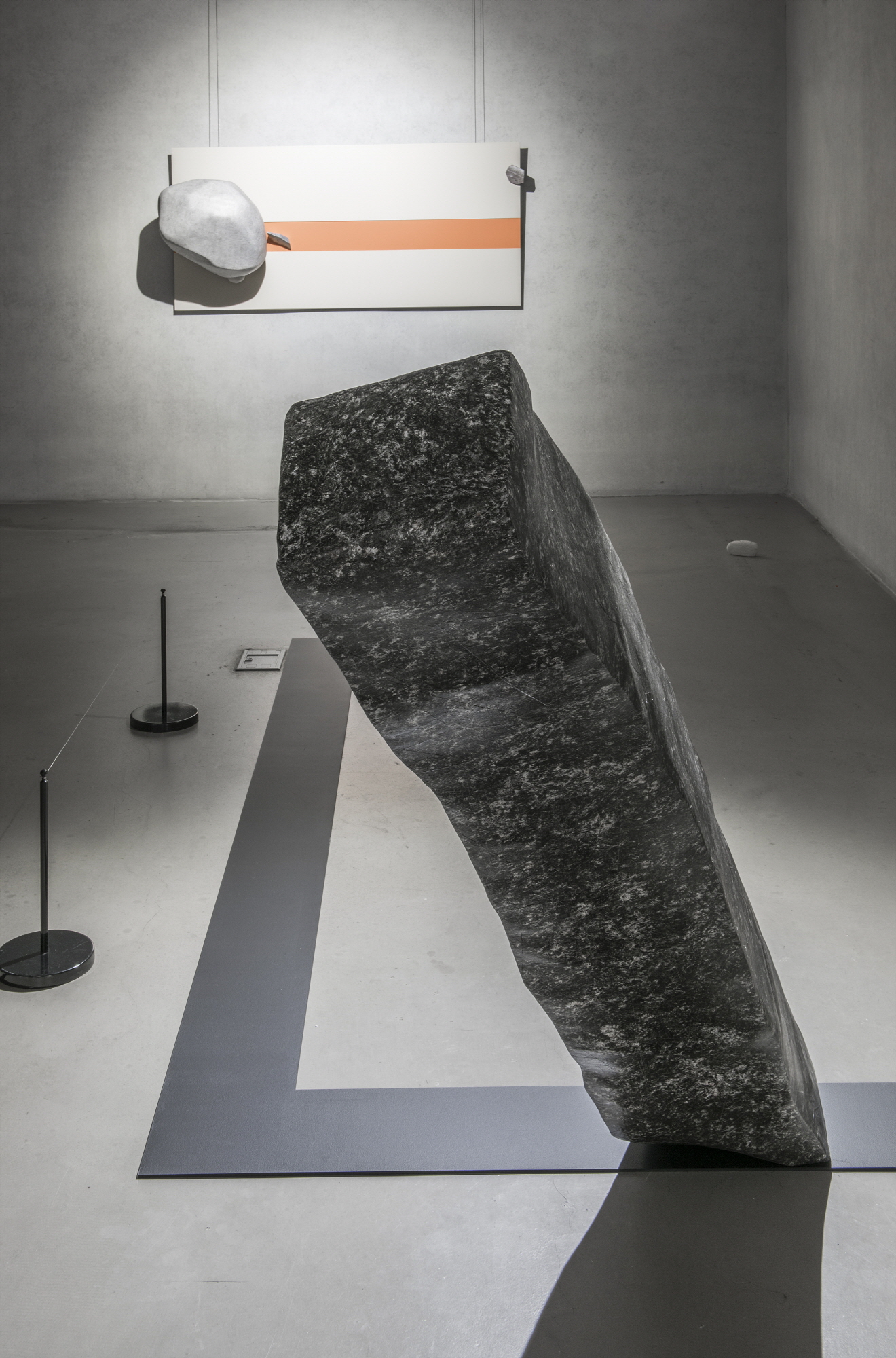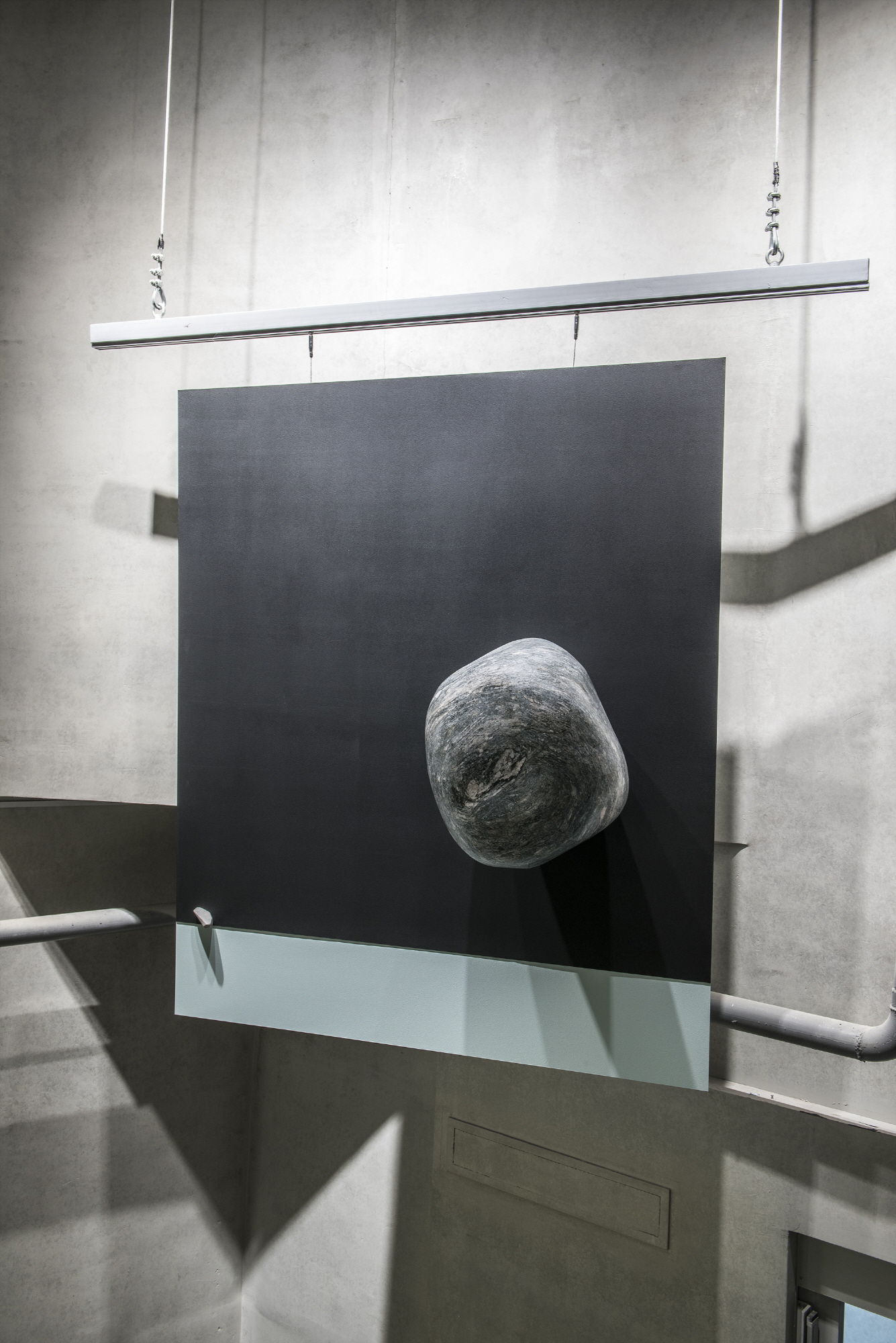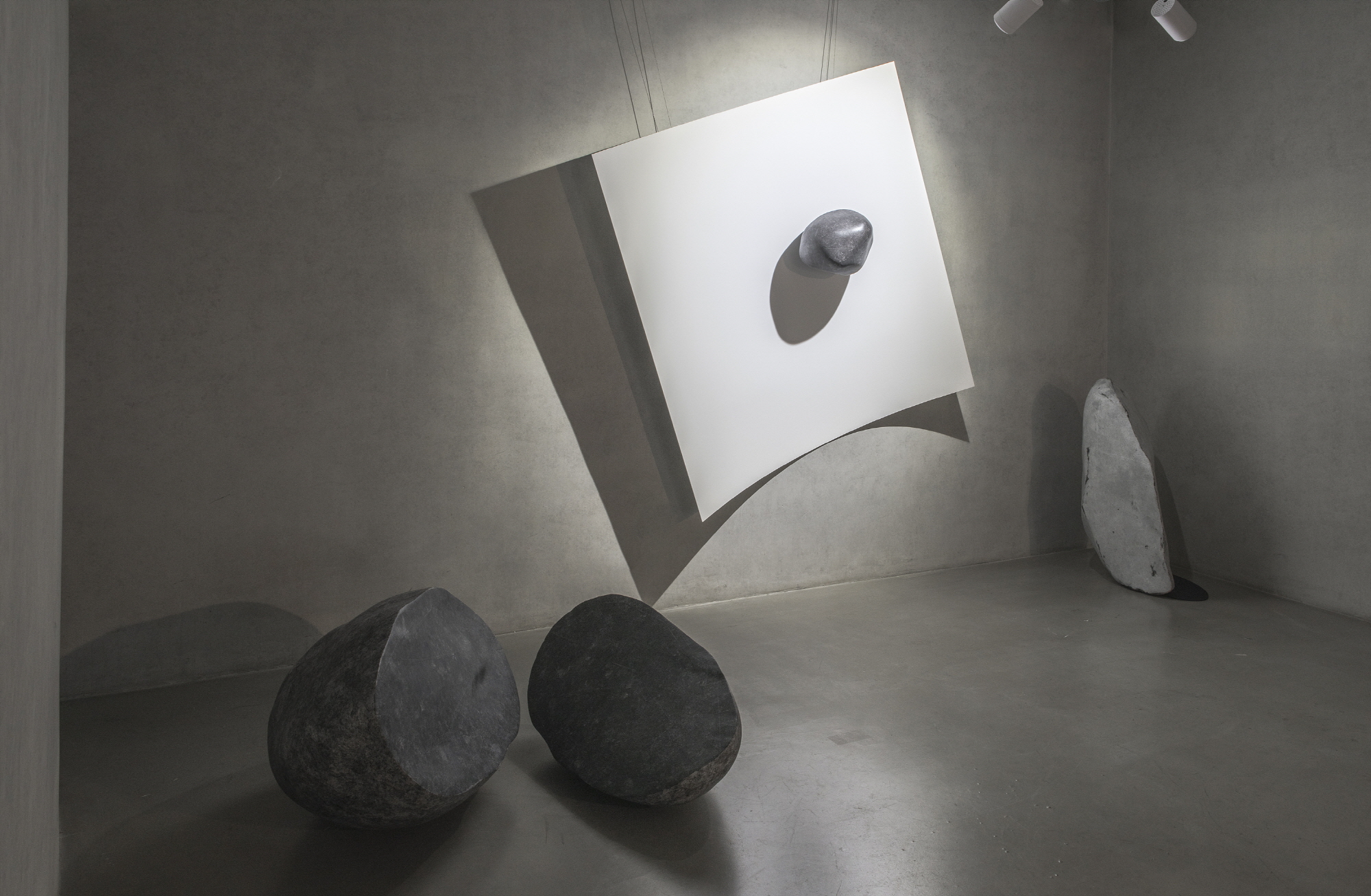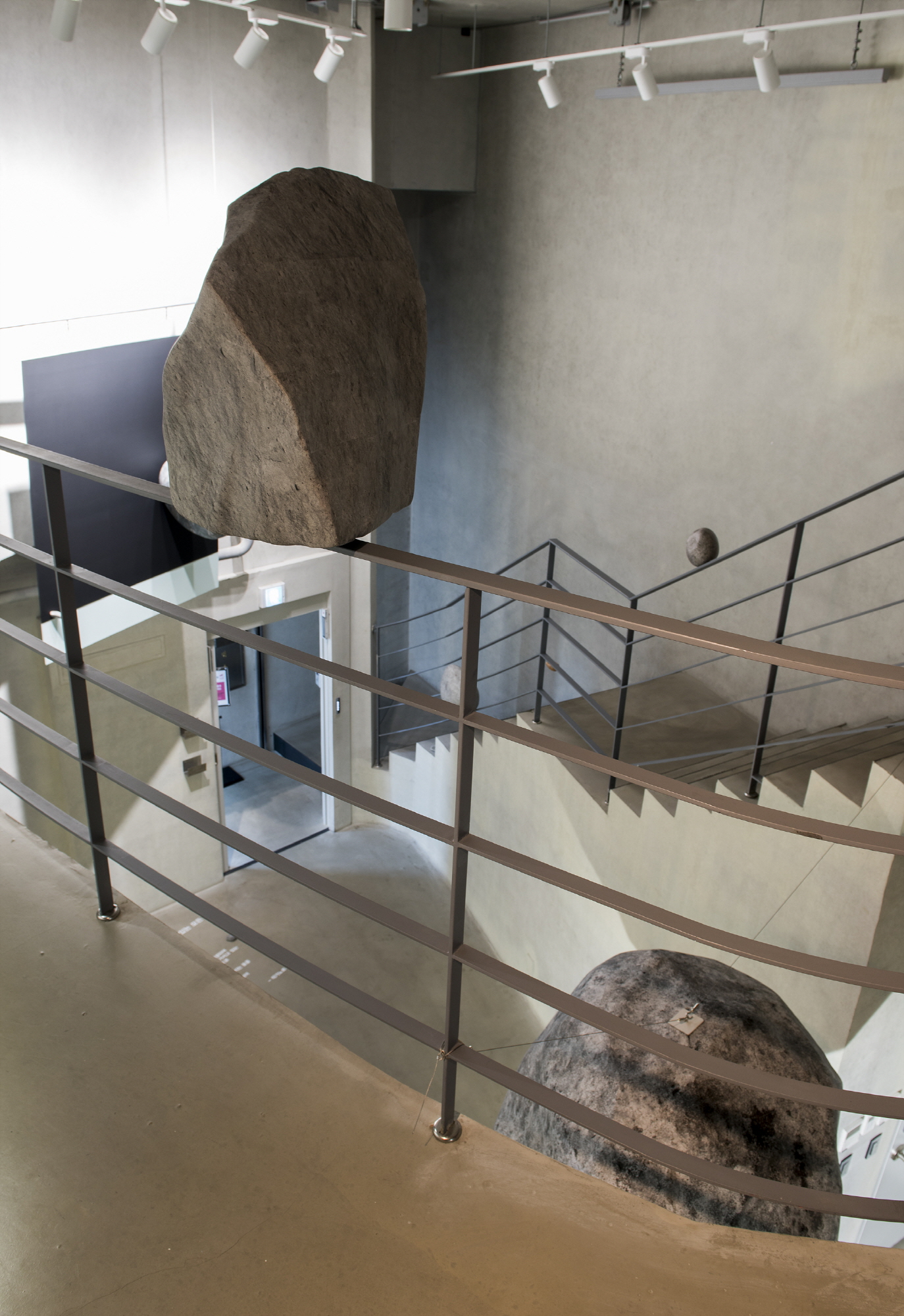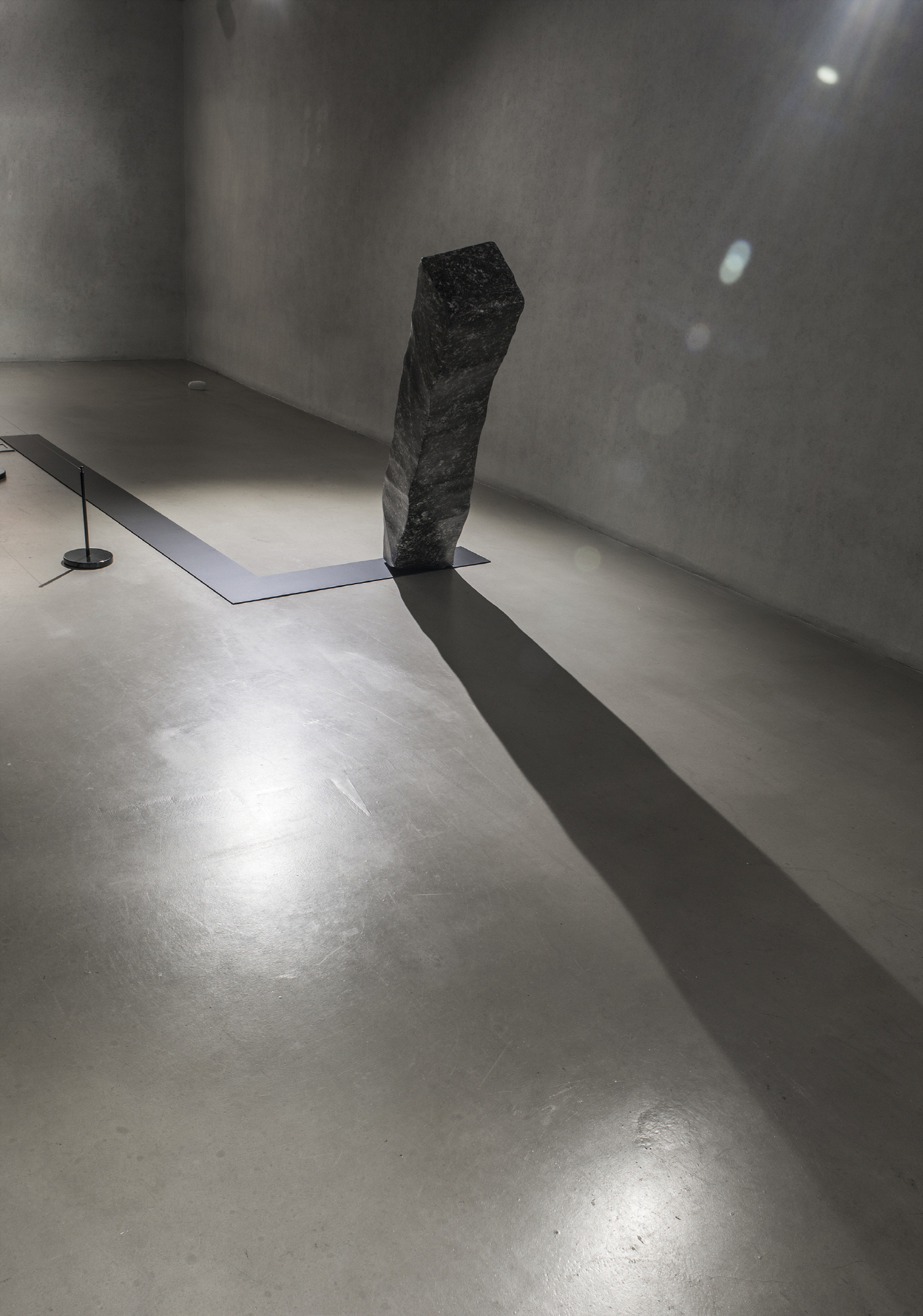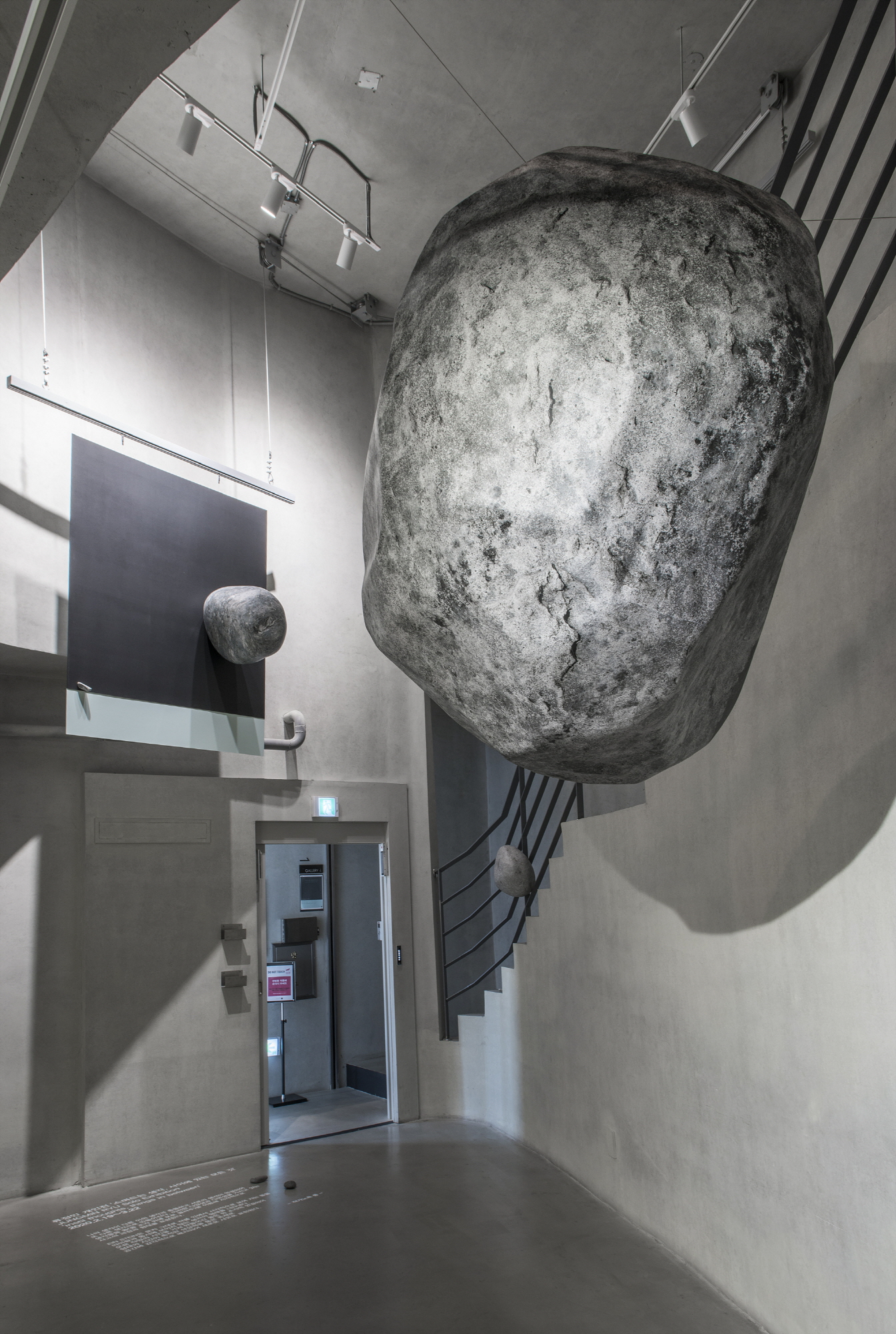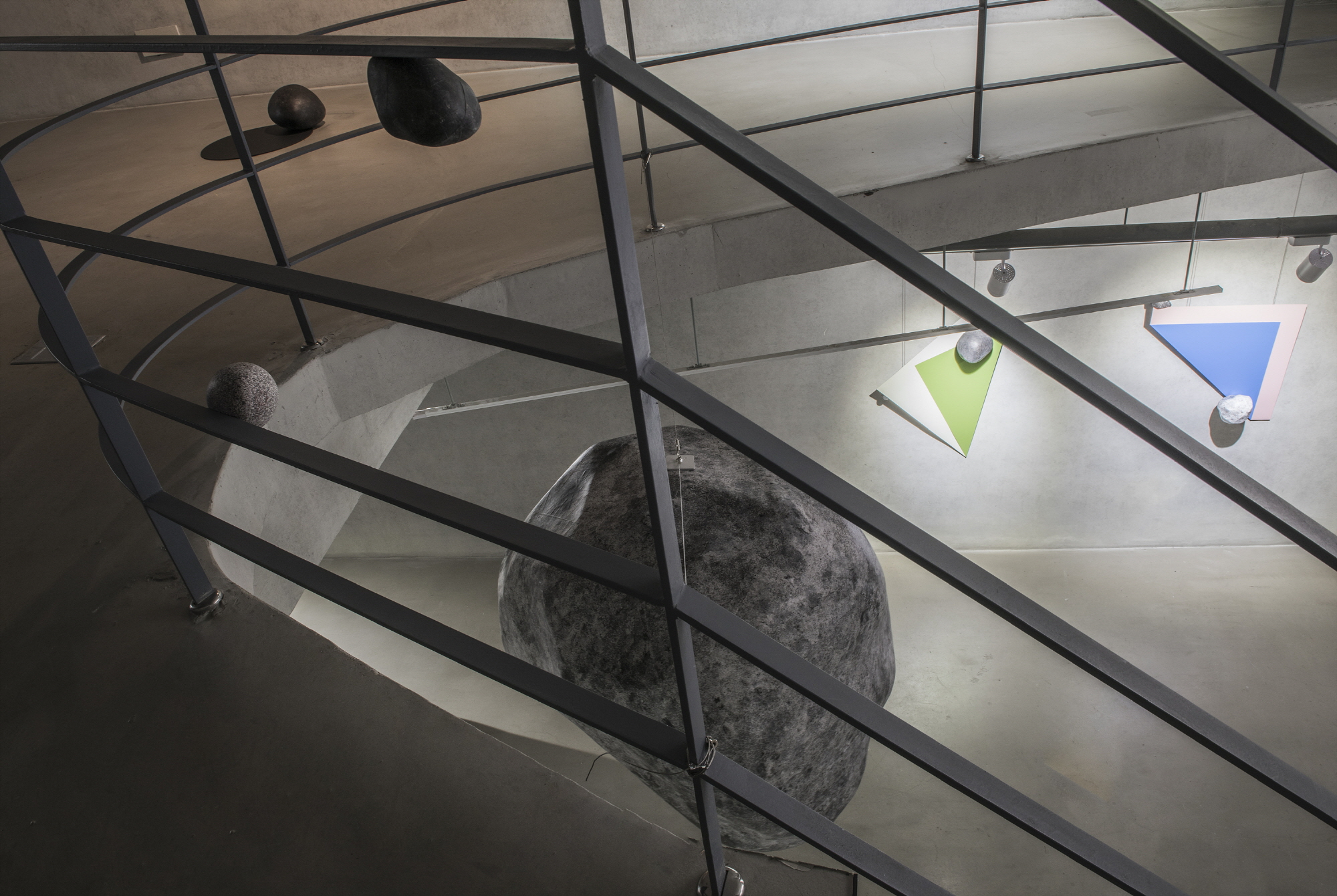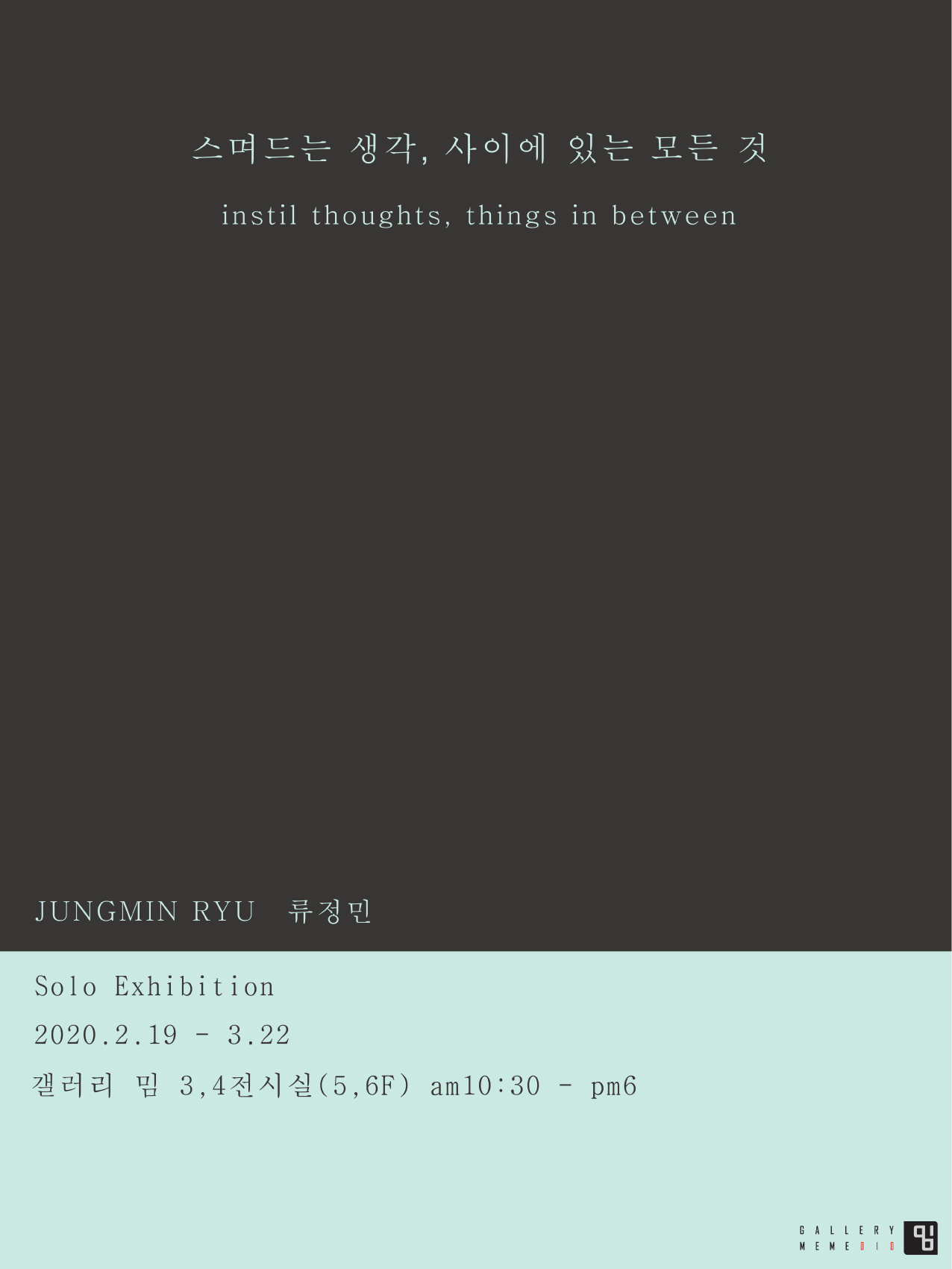류정민
M’cube is a program to discover and support young artists who explore experimental territories with a passion for novelty and challenge their limits.
ABOUT
Education
2009 Staatliche Akademie der Bildenden Kuenste Stuttgart, Fine Art [Freie Graphik] Diplom Studium, Germany
2005 Hochschule fuer Bildende Kuenste Hamburg, [Visuelle Kommunikation], Germany
2001 Kaywon school of Art and Design, Photographic Art, Associate Degree, Korea
Solo Exhibition
2020 instil thoughts, things in between, GALLERY MEME, Seoul, Korea
2018 EIN STEIN_Thinking about Thinking, Gallery Absinthe, Seoul, Korea
2017 The planned space, Accidental shadow, GALLERY INDEX, Seoul, Korea
2012 The Path of Error, TRUNK GALLERY, Seoul, Korea
2009 The Path of Error, space bandee, Busan, Korea
Selected Group Exhibitions
2020 W299 PROJECT, GALLERY WOONG, BON GALLERY, BRUGIER-RIGAIL GALLERY, Seoul, Korea
2019 The Whispering Night, Gyeonggi Creation Center, Gyeonggi-do, Korea
2019 Mysterious Morning, Gyeonggi Creation Center, Gyeonggi-do, Korea
2016 Korea Tomorrow, SUNGKOK ART MUSEUM, Seoul, Korea
2015 SOMA DRAWING_Mindful Mindless, SOMA Museum of Art, Seoul, Korea
2014 OCCUPY JUNGMISO, ART SPACE GALLERY, Seoul, Korea
2014 NAS 2014-NAMU ARTIST SHOW 2014, NaMu Modern &Contemporary Art, Seoul, Korea
2012 Urban Promenade, POHANG MUSEUM OF STEEL ART, Pohang, Korea
2012 ARTHK12, HONG KONG CONVENTION AND EXHIBITION CENTRE, HONG KONG
2012 The Unfamiliarity, CAIS GALLERY, Seoul, Korea
2012 THE POWER OF PHOTOGRAPHY, TRUNK GALLERY, Seoul, Korea
2011 Hello Tomorrow, CAIS Gallery, Central, Hong Kong
2011 Urban Landscape, PARK RYU SOOK GALLERY, Seoul, Korea
2010 Korea Tomorrow, SETEC , Seoul, Korea
2010 Different View, GALLERY FORM, Busan, Korea
2010 ZERO IN, Salon de H, Seoul, Korea
2010 space perfume, GANA CONTEMPORARY, Seoul, Korea
2009 ART. FAIR 21, EXPO XXl, COLOGNE, Koeln, Germany
2009 WinWin2009 ”Indipating”, Horvath&Partners, Stuttgart, Germany
2009 Studierende der Akademie der bildenden Kuenste Stuttgart, Kuenstlerbund e.V, Stuttgart, Germany
2009 Im Maerzen der Maler, Karlskasene, Ludwigsburg, Germany
2008 TestBild, zuffenhausen, Stuttgart, Germany
2008 Kunst Nacht, Unternehmen Kunst Galerie, Landshut, Germany
2008 Dillmann Kunstmarkt, Dillmann Gymnasium, Stuttgart, Germany
2008 Frische Kunst - made in Stuttgart, Galerie Z, Stuttgart, Germany
2007 Bilder Bilder, Stuttgart Rathaus, Stuttgart, Germany
2007 Fotosommer 0711, Stuttgart Kunst Akademie HALLE, Germany
Awards and Main Career
2019 Gyeonggi Creation Center_ Residency, Gyeonggi-do, Korea
2018 Archive Artist, SOMA Museum of Art_ Drawing Center, Seoul, Korea
2012 Art Support Fellowship_ Solo Exihibition, Seoul Foundation for Arts and Culture, Seoul, Korea
2008 GVS-Foerderpreis Junge Kuenstler2008_ 1 Place, Gas Versorgung sueddeutschland, Stuttgart, Germany
2008 Akademiepreis 2008, Staatliche Akademie der Bildenden Kuenste Stuttgart, Stuttgart, Germany
Collection
National Museum of Modern and Contemporary Art, Korea
EnBW Energie Baden-Württemberg AG, Germany
GANA ART GALLERY, Korea
CAIS GALLERY, Korea
GALLERY FORM, Korea
■ Artist Note
EIN STEIN_ 3D photo collage - installation
What’s interesting was the genius of the well known physicist (EINSTEIN), and the countering image of a stone when read in German (EIN STEIN). This lead me to find motif from the power of imagination and the joy of immersing in thoughts, both which to Einstein were taken seriously. A good illustration of this point is the thought experiment--Einstein was an advocate of thought experiments--that take specific imaginary scenarios to infer logical conclusions. These experiments are not much different from the artists’ endeavour to complete a work of art by coming up with various situations.
1. A stone, a thought
- Thought process comes to a temporary pause
My thoughts collide with others’, and each other’s thoughts are connected, eventually becoming another thought. Forms and processes of these different thoughts are visually expressed on stones (photo collage on stone sculptures). A stone becomes a thought, and stones, by engaging with each other, expand to build transformative thoughts. While ever repeating creation and destruction, thoughts pass through the time of reconnection and transformation. The value of thoughts that remain as one of infinite number of cases, and the value of those that seem to briefly cross one’s mind, despite their weight difference, are all on the same plane. Stones were taken to demonstrate thought processes, and the overall concept was represented through photo sculptures built using magnets.
2. EINSTEIN and EIN STEIN
- Thoughts expand into space
Contrasting images of the name EINSTEIN, the physicist, and EIN STEIN, meaning “a stone” in German, are visualized and arranged to present a spectrum of thoughts. This allows for the transition of conceptual thoughts into actual and tangible spaces.
- Photo sculptures using magnets
Magnets are placed inside styrofoams that are carved into stone shape forms, and photos of real stones are cut and glued onto them. Using such photos provides reality and detail to the stone pieces, and cuts made on photos allow for an unrestricted drawing-like expression of the surface. Despite being photographed plainly without manipulation, the surface of real stones all seem different depending on light, angle and position. Layering several photos on top of each other or placing them side by side to match patterns are methods taken to show the connectivity of different thoughts. Magnets, due to their property, are used to represent and enable a connected relationship between the stones--magnets easily stick together or separate from each other, and also push each other away due to polarity. Each individual thoughts, by connecting and colliding with one another, evolve and expand into more diverse thoughts.
- Configuration &Modes of Expression
To imagine is to draw a something with one’s mind, an object or a phenomena have never been experienced. My intention was to take a step further and defy gravity by installing stones on walls and ceilings. The relationship with between you and space is finite, but can be drawn in a borderless form. A large rock hanging on the ceiling by a thin thread; stones that roll around the floor powered by motors; a stone that’s suspended by nothing other than magnetic fields; and stones that float on water all present an unfamiliar experience to us.
Door, chairs, tables and the likes are also brought in to show the thought process taking place in our everyday life, rather than in some other world that’s far away from ours. The shapes of reproduced stones with magnets placed inside (3D photo collage) seem to suggest a still scene in which thought processes came to a momentary pause. A black steel plate is used to show the shadows of the stones, and structures made of white steel are prepared to set up an invisible space and construct a new world, a space for different senses. This space is arranged without any rules or restrictions, thereby expressing numerous thoughts and revealing the
■ Choi Tae-man / Art Critic
The Violation of Gravity: Free Thinking Transcends Space and Time
What might one think upon viewing a stone floating and revolving in mid-air? Regardless of its size, any stone has mass and is thus inevitably under the influence of the law of gravity. When one throws a small and flat cobblestone across the surface of water, the stone skips a few times because of its speed, spin count and the surface spin effect. Yet it does not take long for the stone to eventually sink. If a stone manages to stay afloat and spin without any external stimulation or support, people would find it spectacular and slide hands through the space between the surface and the stone. Though amusing, such concept of levitation, the state in which gravity is repelled and objects float from the effect of magnetic fields, is not totally unfamiliar, as high speed maglev trains that run on magnetic fields rather than on heavy wheels are expected to be commercialized in the near future. Ryu Jungmin was inspired by this idea and created a floating and spinning stone using a maglev module.
Ryu’s floating and spinning stone is not a stone found in nature, but an artificial one that is ‘camouflaged’ and ‘simulated.’ The artist sculpts it from Styrofoam, and then glues on cutout photos of stones and rocks. The Styrofoam stone resulting from this tedious process is a fake that appears real—in other words, it is a simulacrum. Some time ago, Ryu created a space unfamiliar yet beautiful to the audience by combining dozens, hundreds, and thousands of photos. Her repeatedly aligned and combined photos were not simply imagery beyond reality but also photographic topographies created by her psychological state. In this way, the artist confused our senses and perceptions while conveying eccentric and dreamy worlds in the two-dimensional image plane of his photos. After five years of experimenting, Ryu Jungmin finally presented her photographic sculptures for the first time at Korea Tomorrow 2016, which was held at the Sungkok Art Museum. A series of installations titled
According to Newton’s theory of classical mechanics, objects are composed of small and solid particles and cannot be moved without the intervention of an external force. In other words, an object may move only when there is change in velocity. However, in the realm of quantum mechanics, electrons are both particles and waves, and therefore can exist in probability at a random time and location. Ryu Jungmin’s Styrofoam stones that float and revolve in air or are attached to a door are embedded with magnets. This proves that the state of her stones has nothing to do with quantum mechanics; yet the ways in which the artist installs the stones certainly upend our common perceptions.
Why did Ryu Jungmin select stones as subjects of her work? It all began from a fun realization. The artist studied abroad in Germany, and during her years there, she realized that Albert Einstein’s last name is a compound of ‘eins’ and ‘stein,’ which mean ‘one’ and ‘stone’, respectively, in German. That realization inspired her to devise stone installations that reverse the law of gravity and freely occupy the space. In other words, the artist violated classical mechanics for her playful yet challenging attempt at shifting ways of thinking.
A single stone symbolizes a single idea; then the shape, color and size of each stone represent not only the differences between each idea but also the unrestricted freedom of thought. The process of sculpting Styrofoam, cutting out stone images, and then delicately gluing them on the sculpted Styrofoam is simultaneously a process of pure playfulness and a process of immersion—one similar to the concept of epoché (or bracketing), developed by the phenomenologist Edmund Husserl. According to Husserl, epoché is the act of suspending judgment about the natural world to focus on experience and consciousness. Moreover, Ryu’s stone-making may also be understood in connection with stone-balancing or meditation. Her magnet-embedded stones that push away from one another or are pulled together represent the clash, convergence, and expansion of ideas. Stones are irregular in shape yet are smooth on the surface from countless collisions and weathering; likewise, our thoughts are polished and refined through agreements, disagreements and awakenings. In that sense, stones are reflective of how our thoughts come into being. They are visualizations of human thoughts and representations of the freedom of thought. In another stone installation, Ryu Jungmin designed stones so they roll through or roam around stacked chairs like robot vacuum cleaners and toy dogs. Yet again, her stones remind us of the freely wandering nature of human thinking. On the other hand, another stone installation in which a stack of stones are held together by magnets, even recall genomic sequences.
Can human thoughts be read? Machines such as lie detectors, MRIs and EEGs can reveal our thinking to a certain extent, but there is only so much they can grasp, meaning that human thoughts are unchartered territories. That is why thoughts are subtle and mysterious. Each individual’s thought is unique from one another’s, just as each stone is unique in its own way. Through her sculptural installations, Ryu Jungmin implies that we must learn to accept the diversity of human thought rather than try to read them. In other words, the artist is demonstrating his acceptance of differences between thoughts through the act of installing stone figures. In essence, Ryu hung stones or attached them to walls to lightly and freely visualize the endless waves of thoughts that emerge from the overwhelming flood of information provided by media in the contemporary society. The violation of gravity indicates that freedom of thought can transcend space and time. Einstein was at the center of such thinking and her thought experiments extended into space in Ryu Jungmin’s installations. Can an egg stand without any support? Columbus was able to balance an egg, and later experiments revealed that anyone can balance an egg—it just requires time and effort. When one thinks outside the box, making a stone float in air or having it attached to a wall without falling are no longer improbable. Ryu Jungmin’s work is evidence that visual pleasure provided by the liberty of thought can even expand one’s horizons. The philosopher’s stone (lapis philosophorum) does not exist only in legends or alchemy. Thinking differently is the key that brings the philosopher’s stone into reality
2009 슈투트가르트 국립조형예술대학교, 프라이에 그라픽, 디플롬 졸업, 독일
2005 함부르크 국립조형예술대학교, 비쥬엘레 콤무니카치온, 중퇴, 독일
2020 스며드는 생각, 사이에 있는 모든 것, 갤러리 밈, 서울
2018 EIN STEIN_생각의 생각, 갤러리 압생트, 서울
2017 계획된 공간, 우연한 그림자, 갤러리 인덱스, 서울
2012 The Path of Error, 트렁크 갤러리, 서울
2009 The Path of Error, 대안공간 반디, 부산
2020 W299 PROJECT, 갤러리 웅, 본 갤러리, 브루지에-히가이 갤러리, 서울
2015 소마 드로잉_무심(無心), 소마 미술관, 서울
2014 NAS 2014- 나무 아티스트 쇼 2014, 나무 모던&컨템포러리, 서울
2011 헬로우 투모로우, CAIS Gallery, 홍콩
2010 space perfume, 가나 컨템포러리, 서울
2009 ART. FAIR 21, EXPO XXl, COLOGNE, 쾰른, 독일
2009 WinWin2009 ”Indipating”, Horvath&Partners, 슈투트가르트, 독일
2009 Studierende der Akademie der bildenden Kuenste Stuttgart, Kuenstlerbund e.V, 슈투트가르트, 독일
2009 Im Maerzen der Maler, Karlskasene, 루드비히스부르크, 독일
2008 Frische Kunst - made in Stuttgart, Galerie Z, 슈투트가르트, 독일
2008 GVS-Foerderpreis Junge Kuenstler2008, Gas Versorgung sueddeutschland,슈투트가르트, 독일
2008 TestBild, zuffenhausen, 슈투트가르트, 독일
2008 Kunst Nacht, Unternehmen Kunst Galerie, 란츠후트, 독일
2008 Dillmann Kunstmarkt, Dillmann Gymnasium, 슈투트가르트, 독일
2007 Bilder Bilder, Stuttgart Rathaus, 슈투트가르트, 독일
2007 Fotosommer 0711, Stuttgart Kunst Akademie HALLE, 슈투트가르트, 독일
2012 서울문화재단, 문예진흥기금 창작 지원금_ 개인전
2008 GVS-Foerderpreis Junge Kuenstler2008_올해의 젊은 작가 대상, Gas Versorgung sueddeutschland, 슈투트가르트, 독일
2008 Akademiepreis 2008, 슈투트가르트 국립조형예술대학교_ 2008 최우수학생, 독일
EnBW Energie Baden-Württemberg AG(독일)
EIN STEIN은 문자 그대로 작품 안에서 시각적으로 보여 지는 돌을 의미함과 동시에 보이지 않는 생각의 형태를 나타낸다.
오랜 작업의 시간을 거쳐 만들어진 돌은 한 조각씩 연결되어 형태와 시간이 축적된 상상력을 품은 존재로 공간에 감각적으로 배치되어 새로운 사유로 표현된다.

